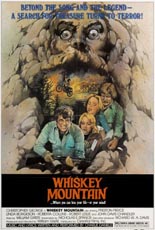
 After hitting his marketable peak with the 1976 Jaws imitation Mako: The Jaws of Death, Florida-based filmmaker William Grefé (Death Curse of Tartu) latched onto Deliverance’s hillbilly-hell vibe for Whiskey Mountain, his final feature. Although its depictions of the class battle between the rural and the (sub)urban may not make you squeal like a pig, the cut-rate thriller works all the same.
After hitting his marketable peak with the 1976 Jaws imitation Mako: The Jaws of Death, Florida-based filmmaker William Grefé (Death Curse of Tartu) latched onto Deliverance’s hillbilly-hell vibe for Whiskey Mountain, his final feature. Although its depictions of the class battle between the rural and the (sub)urban may not make you squeal like a pig, the cut-rate thriller works all the same.
Diana (Roberta Collins, Caged Heat) and Bill (Christopher George, Pieces) are on the hunt for some 200 Confederate muskets her granddaddy supposedly buried up yonder in the North Carolina wilderness, durn near ’round Whiskey Mountain; before he died, he left a map to lead her to that fortune.
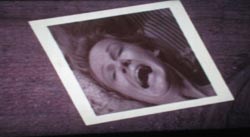 Bringing along camping equipment, motorcycles and their couple friends (Preston Pierce and Linda Borgeson of, respectively, Angels’ Wild Women and no other movie ever), Diana and Bill attract the ire of the local yokels just by being in their town. Challenged mentally and dentally, the rednecks harass the quartet to no end, setting fire to their camp as they sleep, attempting drowning in a raging river and, heck, even stealing a pair of women’s panties!
Bringing along camping equipment, motorcycles and their couple friends (Preston Pierce and Linda Borgeson of, respectively, Angels’ Wild Women and no other movie ever), Diana and Bill attract the ire of the local yokels just by being in their town. Challenged mentally and dentally, the rednecks harass the quartet to no end, setting fire to their camp as they sleep, attempting drowning in a raging river and, heck, even stealing a pair of women’s panties!
Swapping dueling banjos for an original Charlie Daniels tune, Whiskey Mountain stands mighty tall by the standards of the hicksploitation subgenre and regional indies overall. In a rather good way, Grefé catches us off-guard when the danger dial gets rudely cranked in the second half; see, he doesn’t have to do much to make his antagonists seem threatening, because general skeeviness tends to achieve that just fine by itself. And yet, he throws us for an arty loop with a double-rape scene that’s doubly disturbing because technically, we only hear it. All we are shown is a stationary series of Polaroids developing before our eyes; our mind fills in the rest. The effect is unsettling and raises the movie above the usual drive-in fodder, as does its purposely bitter final shot. —Rod Lott

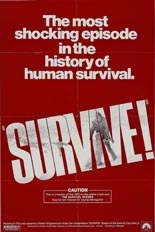
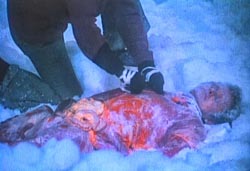

 Not to be confused with
Not to be confused with 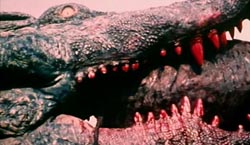
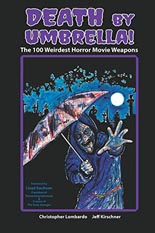
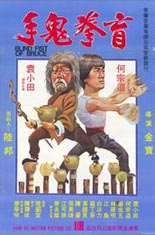
 From
From